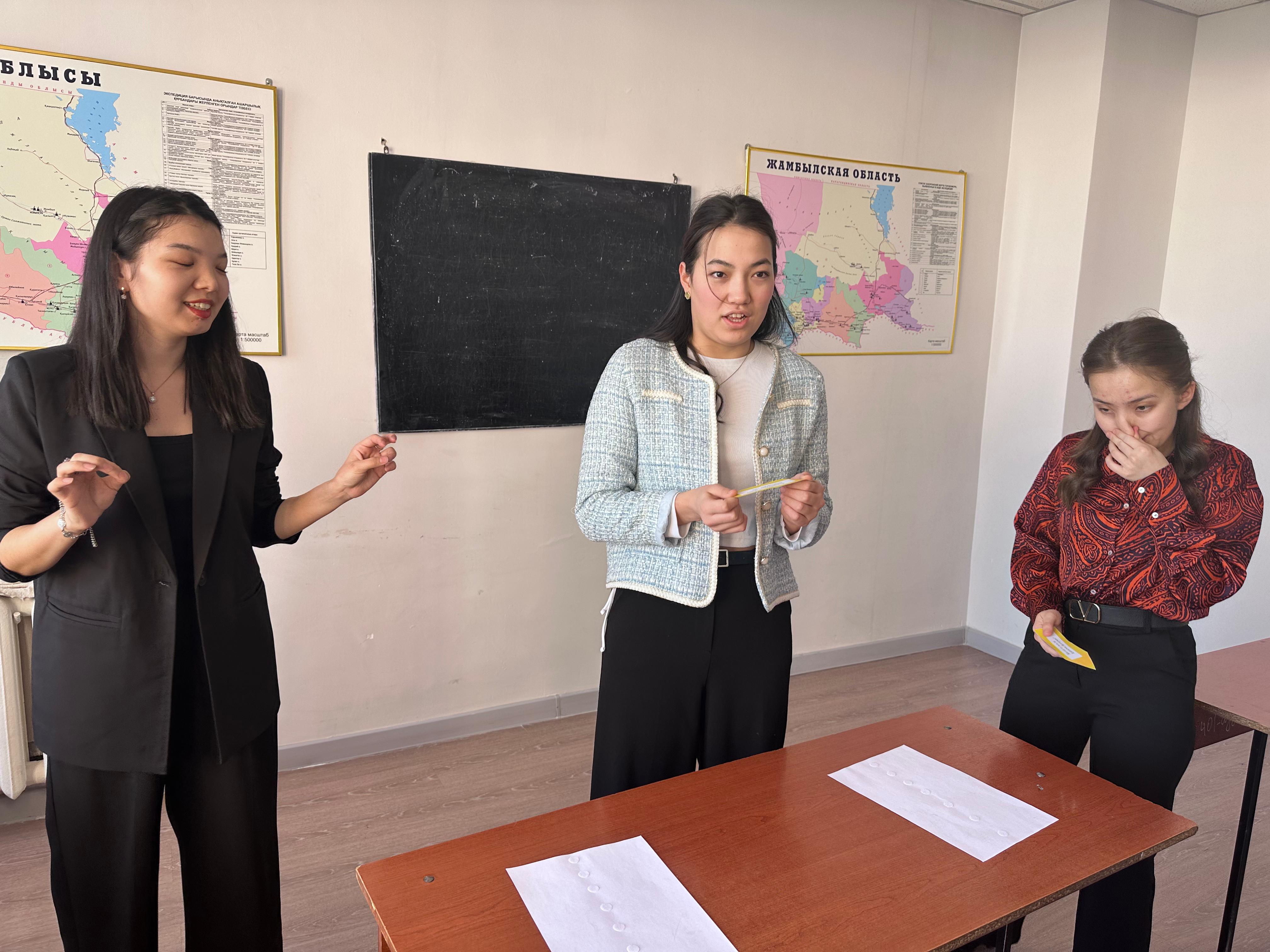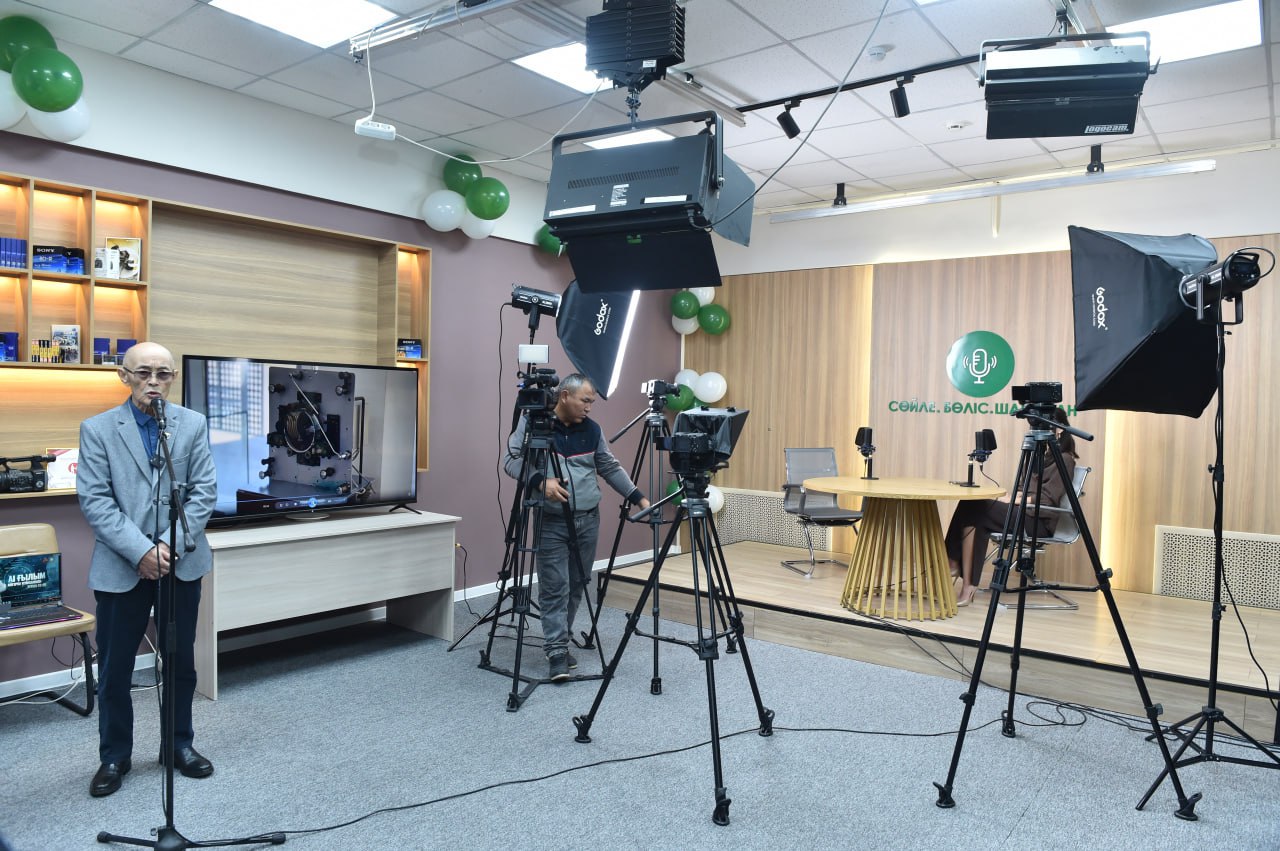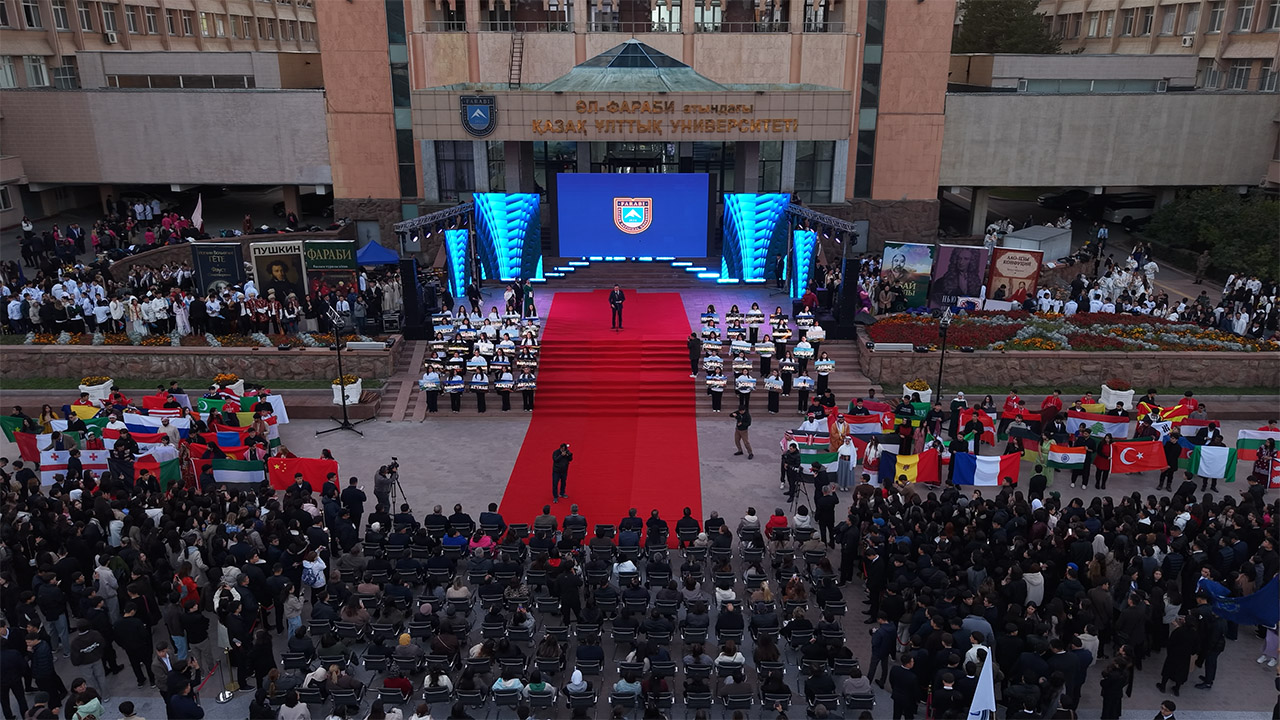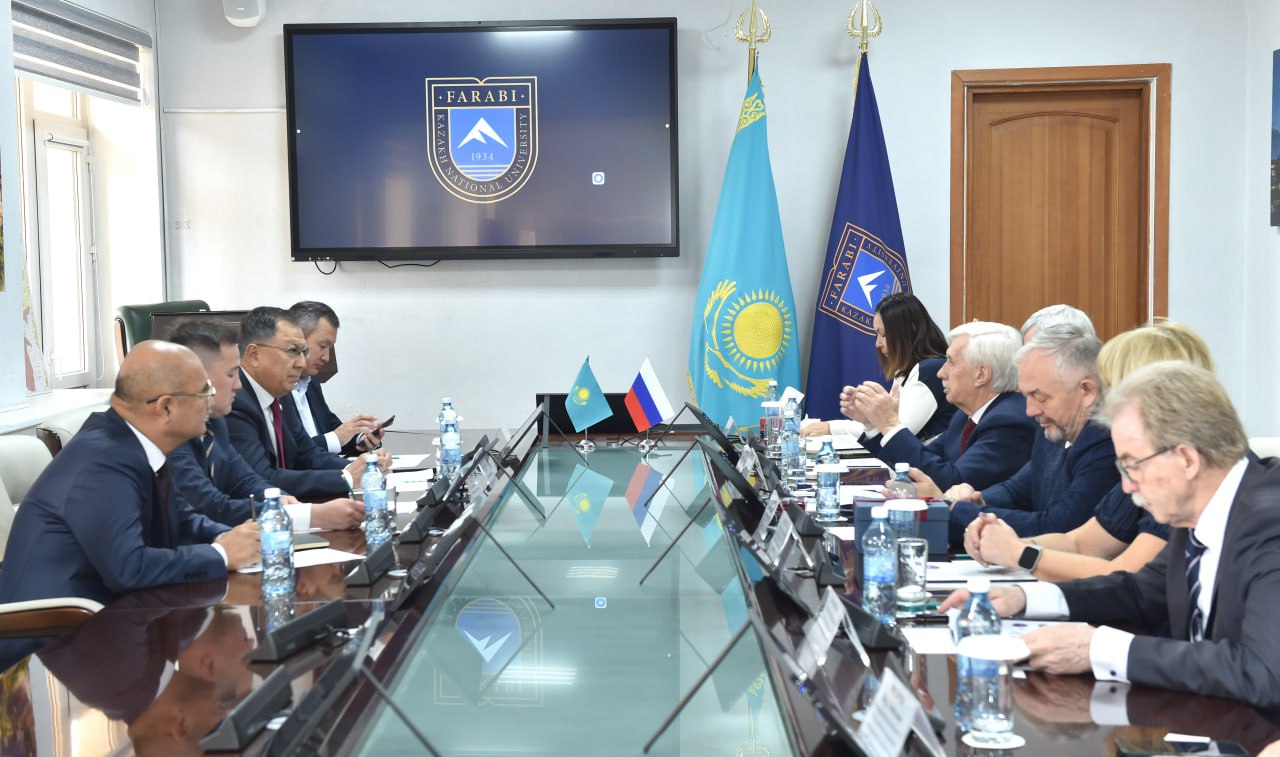Journey into the World of Literature: The Creative Atmosphere of a Demonstration Lesson

Literature is a golden bridge between the past and the present, between thought and feeling. On March 17, 2025 the demonstration lesson held with the 3rd-year students of the “Literary Studies” major which became an exciting journey across that bridge.
The lesson was organized by Aishagul Ashimova, the 1st-year master's degree student in “Kazakh Language and Literature” under the guidance of PhD Dr. G.T. Ospanova from the Department of Kazakh Literature and Literary Theory at Al-Farabi Kazakh National University, and Doctor of Philology, senior lecturer Dr. G.Zh. Bolatova. The topic of the lesson was “The System of Characters in a Literary Work”. The lesson allowed the students to dive deeper into the artistic world and explore the personalities and inner worlds of literary characters.
From the very beginning, a creative and collaborative atmosphere was established in the classroom. The students were divided into groups by assembling poetic fragments, marking the first step towards teamwork. During the lesson, the participants worked in two teams to analyze the system of characters from different angles. The first team explored types of literary characters and their primary and secondary roles. The second team focused on artistic methods of character depiction — including portraiture, characterization, dialogue, and monologue. By working with visual materials and presenting their posters, students developed creative thinking and presentation skills.
To harmoniously combine theory and practice, a variety of methods were employed. Using the “Tarsia” method, the students matched questions with answers and structured material related to the topic. The “Brainstorming” method enabled them to test their knowledge through quick-response questions. Competitive discussions between teams further deepened their understanding of the subject.
In the practical part of the lesson, the students analyzed characters from“Ataukere” by Oralkhan Bokeev applying modern teaching techniques. In “Character Emotion Cardiogram” task they examined the emotional evolution of key characters, trying to understand their psychology, personalities, and inner experiences. The lesson’s climax came with a detailed analysis of how each character was artistically crafted and portrayed.
This lesson provided the students with a valuable opportunity to apply theoretical knowledge in practice. They not only mastered literary terminology but also learned modern approaches to analyzing characters in literary texts. Group work helped them strengthen skills in collaborative thinking, exchanging ideas, and defending their own viewpoints.
At the end of the lesson, students shared their impressions. For many, this session was more than just a class — it offered a new perspective on literature. Some admitted they felt closer to the characters and lived through their stories emotionally. Indeed, this open lesson revealed new opportunities in character analysis and became a powerful stimulus for the development of students’ creative abilities.


